The City Lost and Found
March 26, 2015 / 0 Comments

At a time when my own thoughts about what role art and artists play in meeting the challenges of contemporary urban life have been reawakened, the exhibition “City Lost & Found: Capturing New York, Chicago and Los Angeles, 1960-1980,” recently on view at the Art Institute of Chicago and now at the Princeton University Art Museum, seemed rather fortunate. This seminal piece of scholarship (curated by Katherine A. Bussard, Alison Fisher and Greg Foster-Rice) gathered images and documentary materials by artists, journalists, filmmakers, architects, and urban planners that together showed the convergence of creative ideas and urban practices that sought to transform these American cities during the political years of the sixties and seventies.
Throughout, I was struck by the way in which these seemingly disparate, and at times conflicting, perspectives fluidly informed each other, as well as one’s understanding of the economic, political and environmental forces that defined these urban centers. This understanding was enhanced both during the decades represented and within the exhibition itself by a revitalization of the documentary and activist functions of photography and film that offered personalized views of the people and issues at hand. Alongside these more artistic contributions were images of race riots and political protests culled from newspapers, magazines and broadcast news that revealed how both the mainstream media and the alternative press educated the American public and shaped its collective consciousness.
Organized in three sections, each one devoted to one of the three cities under view and in a chronology that followed the exhibition’s title, viewers encountered themes of urban preservation, demolition and renewal, in tandem with community initiatives and protests that confronted the corruption of city politicians and the commercial aspirations of developers and real-estate moguls. My focus here is mainly on artists, as image makers, cultural producers, citizens, and provocateurs, who offered creative visions of these issues via photographs, films, conceptual projects, performances and public works that intervened in the social spaces of their respective cities.
Projected at the show’s entrance and introducing the New York section, James Nares’ black-and-white film Pendulum (1976) offered a poignant frame for thinking about cities as shifting, unstable entities. Here, a large concrete sphere attached to a wire swings back and forth along a desolate, trash-strewn street in downtown Manhattan, creating an anxious scene in which the forces of gravity and time suggest impending destruction rather than equilibrium. Early photographs by Thomas Struth and well-known works by Hans Haacke (Real-Time Social Systems, 1971), Martha Rosler (photographs from her Downtown series, c. 1964), and Mierle Laderman Ukeles (documentation of her Touch Sanitation performance, 1977-84) are re-activated here within their more political versus art historical contexts, offering new sight lines into the complex web of real-estate cartels, urban poverty, and labor tensions that plagued New York City during these years, particularly under John Lindsay’s tenure as mayor (1966-1973).
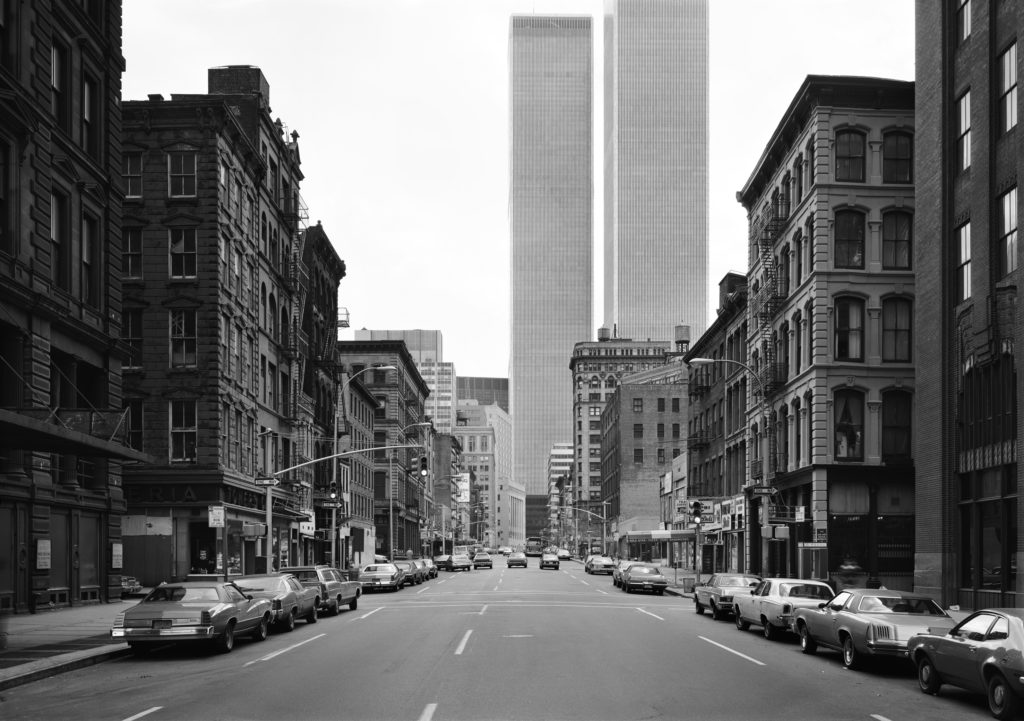
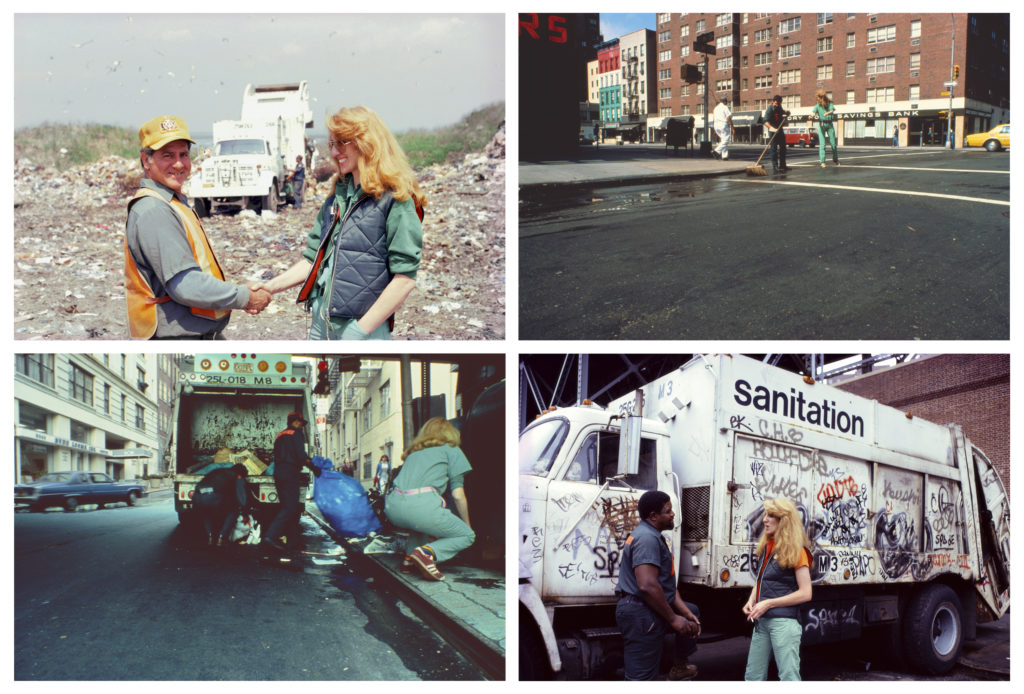
In contrast, Gordon Matta Clark’s silent film City Slivers (1971), fragmentary vertical images of the city (its architecture, its citizens, its streets), creates a portrait of Manhattan as a dynamic, rhythmic organism, in which the public and built environment intersect and, sometimes, cohere. In addition to extending his own deconstructivist practices (examples of which appear in the Chicago section) into time-based media, the work seems to align with the ideas of urban activist Jane Jacobs, whose book The Death and Life of Great American Cities (1961) posits cities as organic spaces defined by neighborhoods rather than centralized planning, a theme fundamental to the exhibition’s overarching premise.
Jacob’s ideas are furthered by photographer Arthur Tress, whose series Open Spaces in the Inner City (1971) documents citizens reclaiming unused open spaces, and by several archival images of neighborhood festivals, castle-building contests and collective chalk drawings in New York city parks (circa 1966) that underscore the importance of public and green spaces in building community. Such images affirm Jacob’s often critical stance towards large urban renewal projects spearheaded by big-name architects and by what she deemed as modernist architecture’s overly aesthetic vision.
These issues come into sharper focus, and tension, in the Chicago section, where images by photographers such as Kenneth Josephson and Richard Nickel, working in the name of historic preservation, document the demolition of neighborhood landmarks and architectural icons. Others such as Art Sinsabaugh and Bob Thall created sweeping vistas of the Chicago skyline and various expansion projects that celebrated the modernist reconstruction of the city’s inner core.
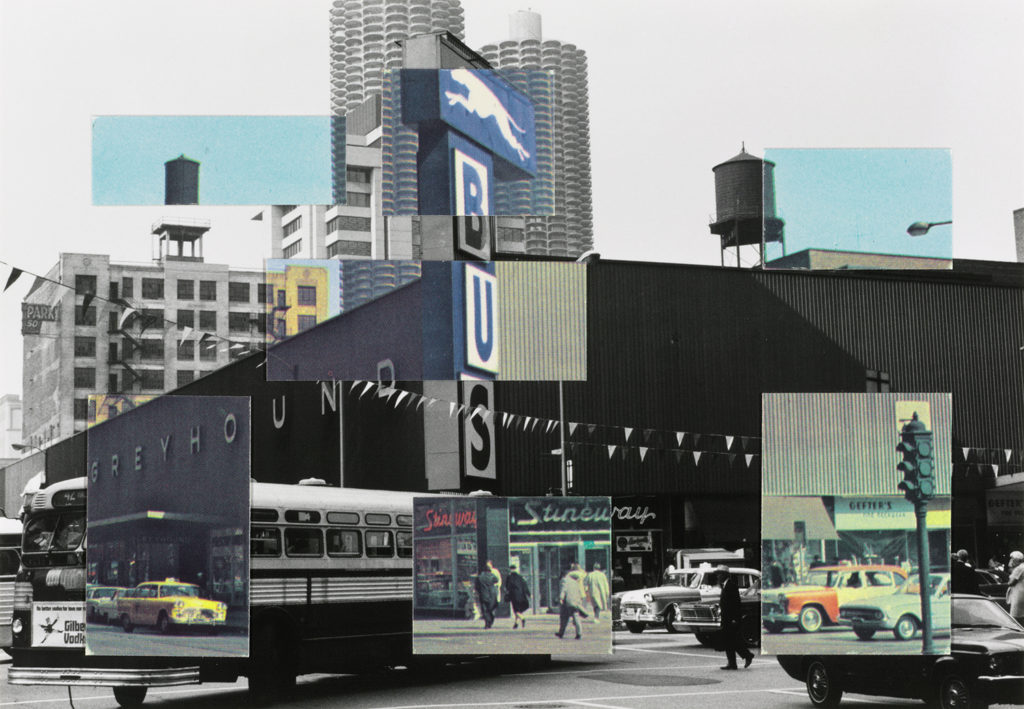
Central to the Chicago segment of the show is the police violence surrounding the 1968 Democratic National Convention (DNC), captured here in newspaper reports (ranging from the mainstream New York Times and Chicago Tribune to the radical Ramparts), eye-witness photographs and various artists’ projects. Such images reveal an authoritative administration (Richard J. Daley) at odds with the realities of the times and disconnected from the city’s deep history of political activism. Rebecca Zorach’s catalog essay “Seizing the Camera,” argues that Daley’s targets were not just peaceful demonstrators but journalists as well, who were also beaten and arrested. Daley knew the power of the media and created his own, ultimately propagandistic account of the events in What Trees Do They Plant?, a film, included here, produced by the City of Chicago that aired on broadcast television two weeks after the riots.
Among the various artists’ responses to the DNC violence was Barnett Newman’s sculpture Lace Curtain for Mayor Daley (1968). A window dressing constructed of Cor-ten steel and barbed wire, it emulates the barbed-wire barricades outfitted on military jeeps that patrolled the city’s streets, at the same time infusing the reductive vocabulary of minimalism with a menacing threat. This work was originally created for the group exhibition “Richard J. Daley,” co-organized by Feigen Gallery, Chicago, and artist Claes Oldenburg, which also included works by Donald Judd, Robert Morris and others, many of whom were part of a national boycott of artists who refused to show their work in Chicago. Soon, other exhibitions were organized, among them “Violence in American Art” at the Museum of Contemporary Art of Chicago (MCA), represented here by various broadsheets, posters and announcements.
Also at the MCA but outside the DNC theme was Allan Kaprow’s Moving (1967), a happening that enlisted ordinary Chicagoans who, in tandem with the artist, furnished and occupied three empty apartments in different parts of the city over the course of four days. Through several black-and-white photographs by Peter Moore, one witnesses discarded chairs and rugs being hauled down the street, a candlelight dinner served on paper plates, and a solitary figure sitting in a light-filled window bay. An interventionist gesture about the complacency of bourgeois life, the work is also a commentary on class, property and ownership rights, issues also addressed in black-and-white photographs by Jonas Dovydenas and Yasuhiro Ishimoto, who capture the city’s ethnic and black neighborhoods, and in various films that document the foils of gentrification and gang life.
Race, central to many of the social and economic issues explored throughout the exhibition – from Gordon Parks’ 1968 film Portrait of a Harlem Family to DeWitt Beall’s 1970 documentary on the Chicago Vice Lords – also framed the Los Angeles section. The 1965 Watts Riots was recorded here in newspaper and magazine images that reveal the police brutality, violence and devastation that ensued over seven days in mid-August. Similar to the Chicago installation, various art-world responses were also on view, including Mel Stuart’s 1973 film Wattstax, documenting the music festival of the same name organized to commemorate this historic event and to celebrate black pride. Noah Purifoy’s Watts Uprising Remains (c. 1965-66), a mass of charred debris found near the riot site and embedded with a tattered bible, functions as both archeology and memorial.
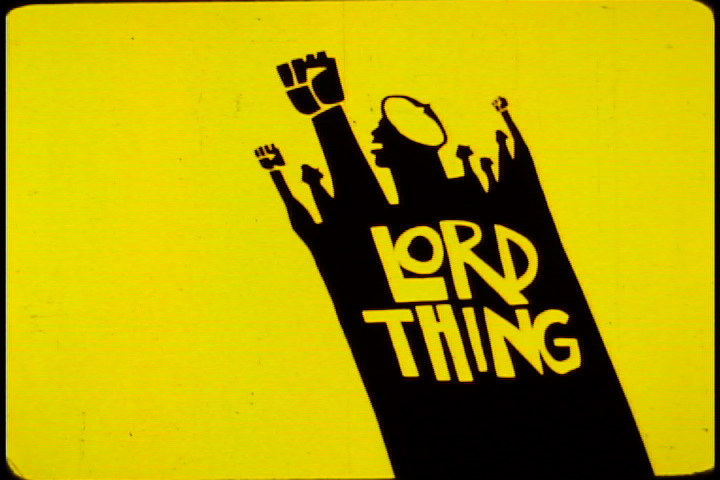
Works by Ed Ruscha, studies for his 1968 painting The Los Angeles County Museum on Fire and artist publication Every Building on the Sunset Strip, while overly familiar to this viewer are important in this context, connecting to both Watts and to themes of development and displacement surveyed elsewhere in this section. Photographs by Julius Shulman and William Reagh, for example, document the redevelopment of Bunker Hill, one of the city’s largest (and most controversial) urban renewal projects begun in the mid-1950s that, from my understanding, still continues today. Similarly, Anthony Hernandez’s black-and-white photographs of public transit zones, in which Californians wait in silence and isolation at bus stops, counter the promises of urban planners, whose solutions to the city’s transportation, noise and air pollution problems (as well as a whole host of other issues) are offered in several Department of City Planning publications on view.
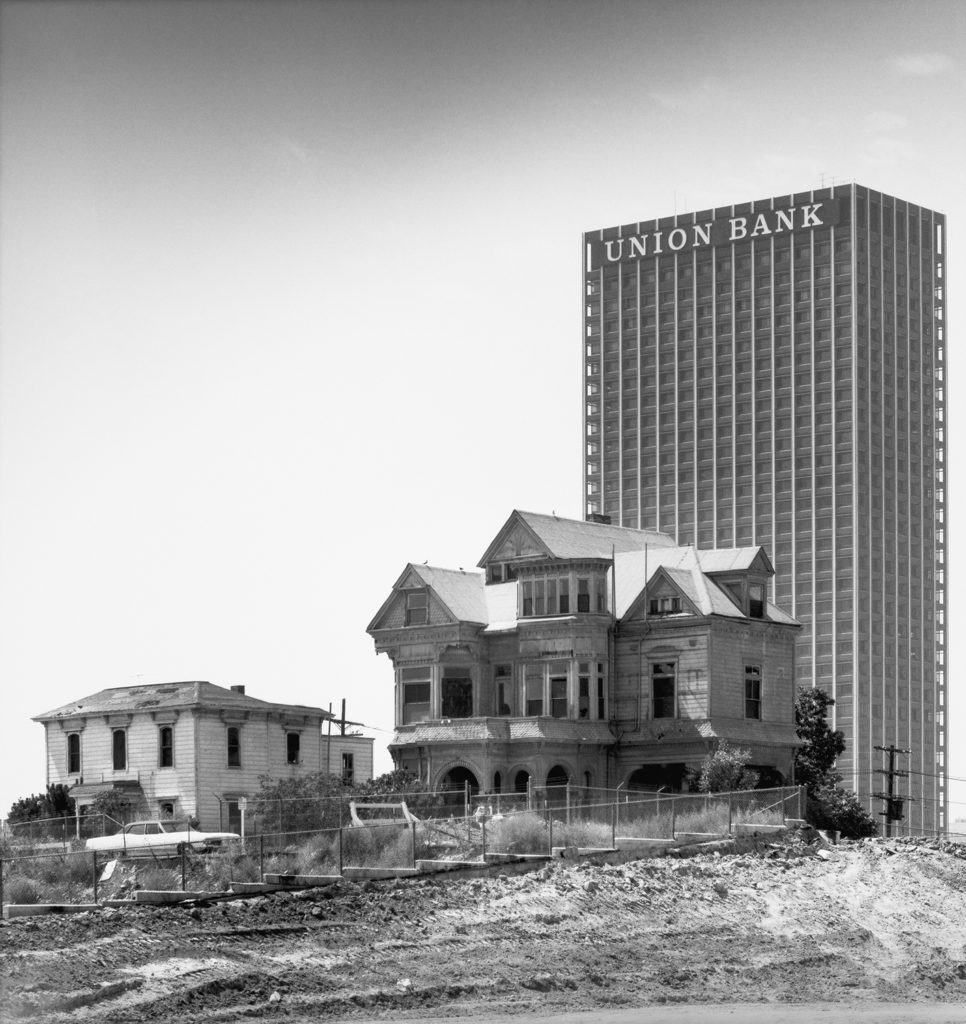
To me, the exhibition’s portrait of Los Angeles seemed decidedly different from the other two sections – mainly more diffuse – although my own lack of knowledge about this city may have shaped this vision. Nonetheless, “The City Lost & Found” affirmed my belief in the power of art as a social force in shaping the views of any given place and time, including my own.
All images courtesy of The Art Institute of Chicago.